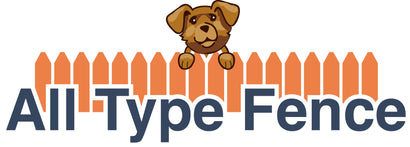Serving Douglassville, King of Prussia & beyond since 1953
Serving Douglassville, King of Prussia & beyond since 1953
Residential
Service & Install
About

Pool Fence Safety
If you own a swimming pool, then, chances are, you already own a fence. Pool fences are regulated at the municipal level. Do you know what your municipality’s regulations are for pool fences?
Installing a fence around your swimming pool is a smart security measure, and may actually be required where you live. A fence prevents children and animals from having unsupervised access. Also, your homeowner’s insurance policy may actually require you to have a fence around your pool.
How do you know what type of fence is the best to secure your swimming pool?
Although there are no standard requirements across the board from state to state, your best bet is to contact your local township/borough office and ask for a copy of the requirements they already have in place for pool fences. Since every state and county sets up agencies differently, try contacting the following in your area: your municipality’s Building Code Department, the Department of Health, and/or the Department of Licensing and Regulatory Affairs. Most likely, you will only need to contact your local municipality to get the information you need prior to installing a pool fence, or upgrading the one you already have in place.
Here’s a list of features every pool fence should have, based on legal requirements across the states and the U.S. Consumer Product Safety Commission:
Height: Some areas require a 4-ft. fence; the CPSC recommendation is 4 ft. or taller.
Structure: Must be impossible for children to climb.
Type: Permanent fencing is ideal because of durability.
Gate: All states require that they open outward, away from the pool area, and be self-closing and self-latching.
Materials: Fence and gates can be made from a wide range of materials, including wood, vinyl, and aluminum. Make sure the material you pick is not easily susceptible to damage. In most states, the space between the vertical bars can’t be more than 4 inches wide.
In addition, some states actually require additional layers of protection after installing a pool fence. In Pennsylvania, these measures are not required, but are still a good added layer of safety and security for your pool area in addition to fencing. Examples of additional layers of security include automatic rigid pool covers, an underwater motion swimming pool alarm, and rescue equipment.
Installing a fence around your swimming pool is a smart security measure, and may actually be required where you live. A fence prevents children and animals from having unsupervised access. Also, your homeowner’s insurance policy may actually require you to have a fence around your pool.
How do you know what type of fence is the best to secure your swimming pool?
Although there are no standard requirements across the board from state to state, your best bet is to contact your local township/borough office and ask for a copy of the requirements they already have in place for pool fences. Since every state and county sets up agencies differently, try contacting the following in your area: your municipality’s Building Code Department, the Department of Health, and/or the Department of Licensing and Regulatory Affairs. Most likely, you will only need to contact your local municipality to get the information you need prior to installing a pool fence, or upgrading the one you already have in place.
Here’s a list of features every pool fence should have, based on legal requirements across the states and the U.S. Consumer Product Safety Commission:
Height: Some areas require a 4-ft. fence; the CPSC recommendation is 4 ft. or taller.
Structure: Must be impossible for children to climb.
Type: Permanent fencing is ideal because of durability.
Gate: All states require that they open outward, away from the pool area, and be self-closing and self-latching.
Materials: Fence and gates can be made from a wide range of materials, including wood, vinyl, and aluminum. Make sure the material you pick is not easily susceptible to damage. In most states, the space between the vertical bars can’t be more than 4 inches wide.
In addition, some states actually require additional layers of protection after installing a pool fence. In Pennsylvania, these measures are not required, but are still a good added layer of safety and security for your pool area in addition to fencing. Examples of additional layers of security include automatic rigid pool covers, an underwater motion swimming pool alarm, and rescue equipment.
Also in News

New Year, New Projects!
Contact us today to take the first step in reaching your New Year's goals for your home at https://all-typefence.com/pages/request-a-quote!

Holiday Fence Inspo
"It’s a beaut, Clark!" Now we all know Clark Griswold had his vision of what he wanted his house to look like for the holidays, so what about your fence?
Subscribe
Sign up to get the latest on sales, new releases and more …















